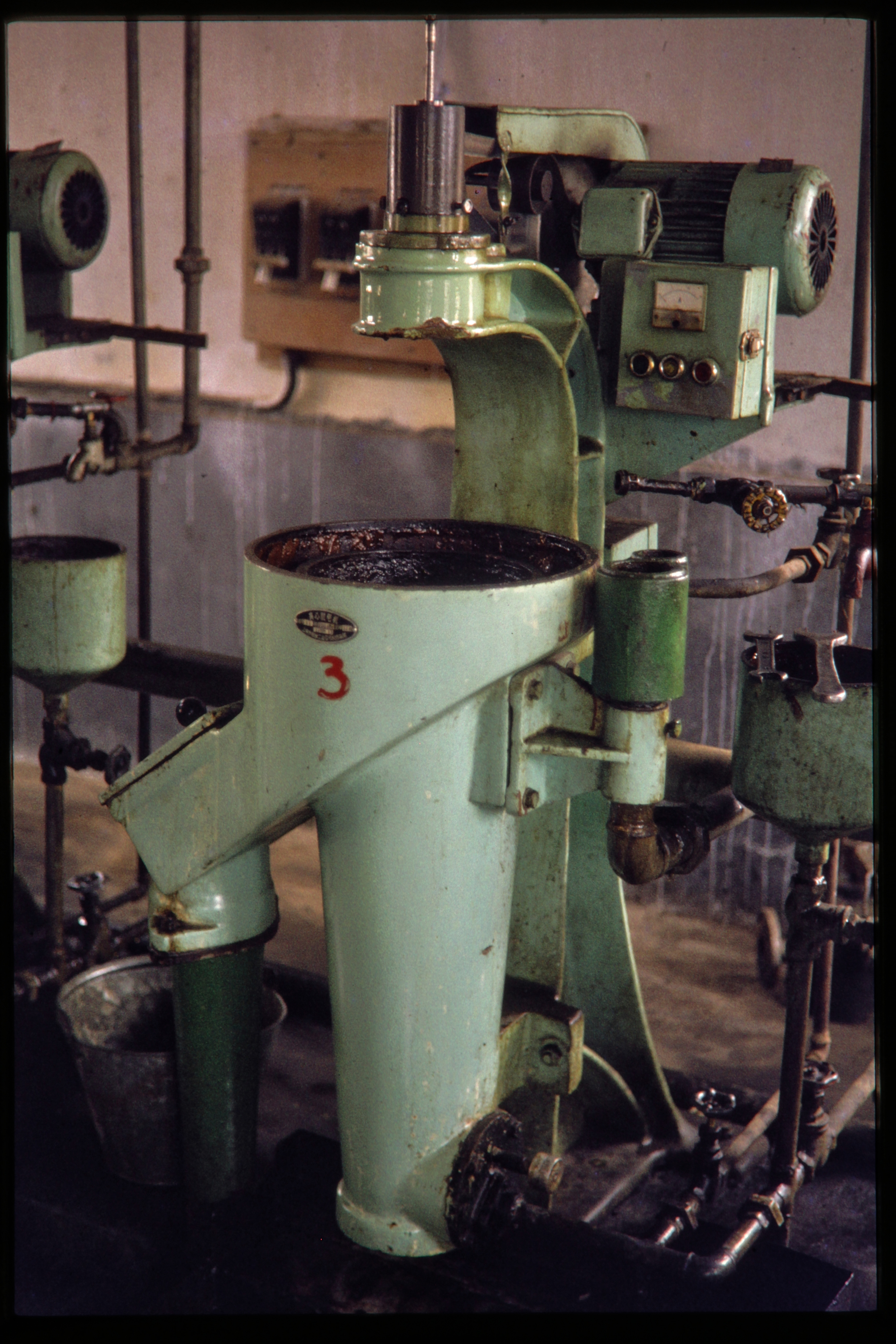Background on Ted Goldfarb

Oil processing plant: machinery, June 1978
A chemist and founder of the Science for the People chapter at State University of New York at Stony Brook, Ted Goldfarb began his academic career as a specialist in molecular spectroscopy and dynamics. By the 1970s, however, he moved gradually into the emerging field of environmental chemistry and became increasingly interested in the issues surrounding scientific ethics, science and public policy, and science education.
A long-time member of the editorial collective of Science for the People magazine, Goldfarb was one of the organizers of the second Science for the People delegation to China that visited there in the summer 1978. The proposal, which appeared in their magazine for May-June 1977, described both the goals and long-delayed background for the trip:
The idea of a second SftP trip to China first received serious consideration in December 1974. After a couple of false starts, a resolution was finally agreed upon at a Northeastern Regional Coordinating Committee meeting in September 1976 to make a serious attempt to generate the activity and support needed to develop a proposal to send to the People's Republic of China before the end of the year. Although we didn't quite make the deadline, the effort was a success and the proposal that follows was forwarded to China by members of the first trip delegation in mid-March of this year.
The political work that was involved in reaching an agreement on the goals and specific contents of the proposal underlined the need for a decision-making structure and a more adequate communication network within SftP. On the other hand it also demonstrated that a joint effort by five widely separated groups is possible even under the present structureless circumstances.
The twelve delegates comprising the SftP delegation spent one month in China, arriving in Hong Kong on May 30 and proceeding along a circuit that included Guangzhou, Hainan Island, Changsha, Shanghai, Suzhou, Jinan, Shandong, Beijing, and Hebei Province. In keeping with their stated goals of studying "how science and technology were organized in China to meet people's needs," the delegation visited grain processing plants, fertilizer plants, textile mills, tractor factories, agricultural academies, the Shengli oil fields, and land reclamation projects, as well as standard touristic sites such as the Great Wall, Forbidden City, and Ming Tombs before leaving the People's Republic on July 2.
Goldfarb was just 66 when he died on April 3, 2002.

